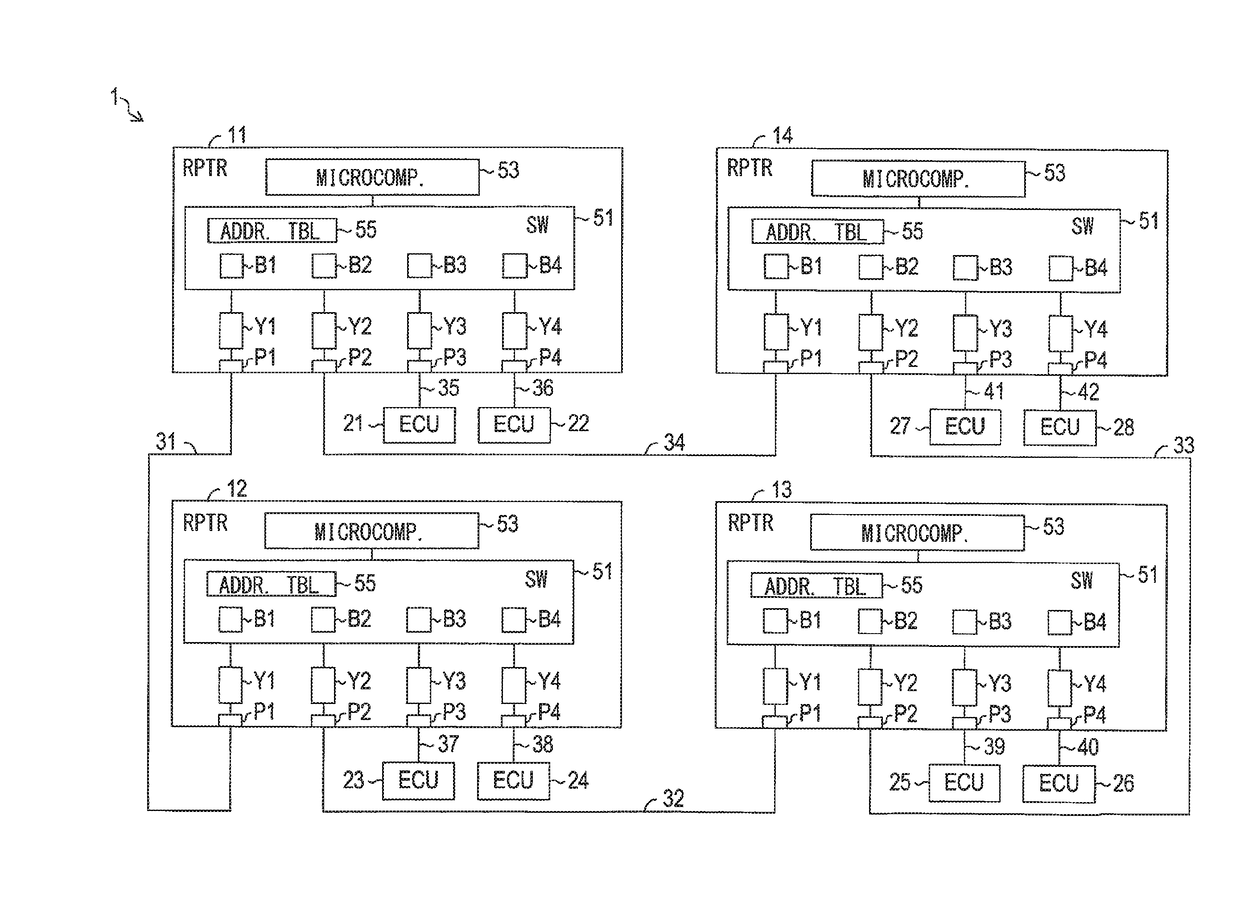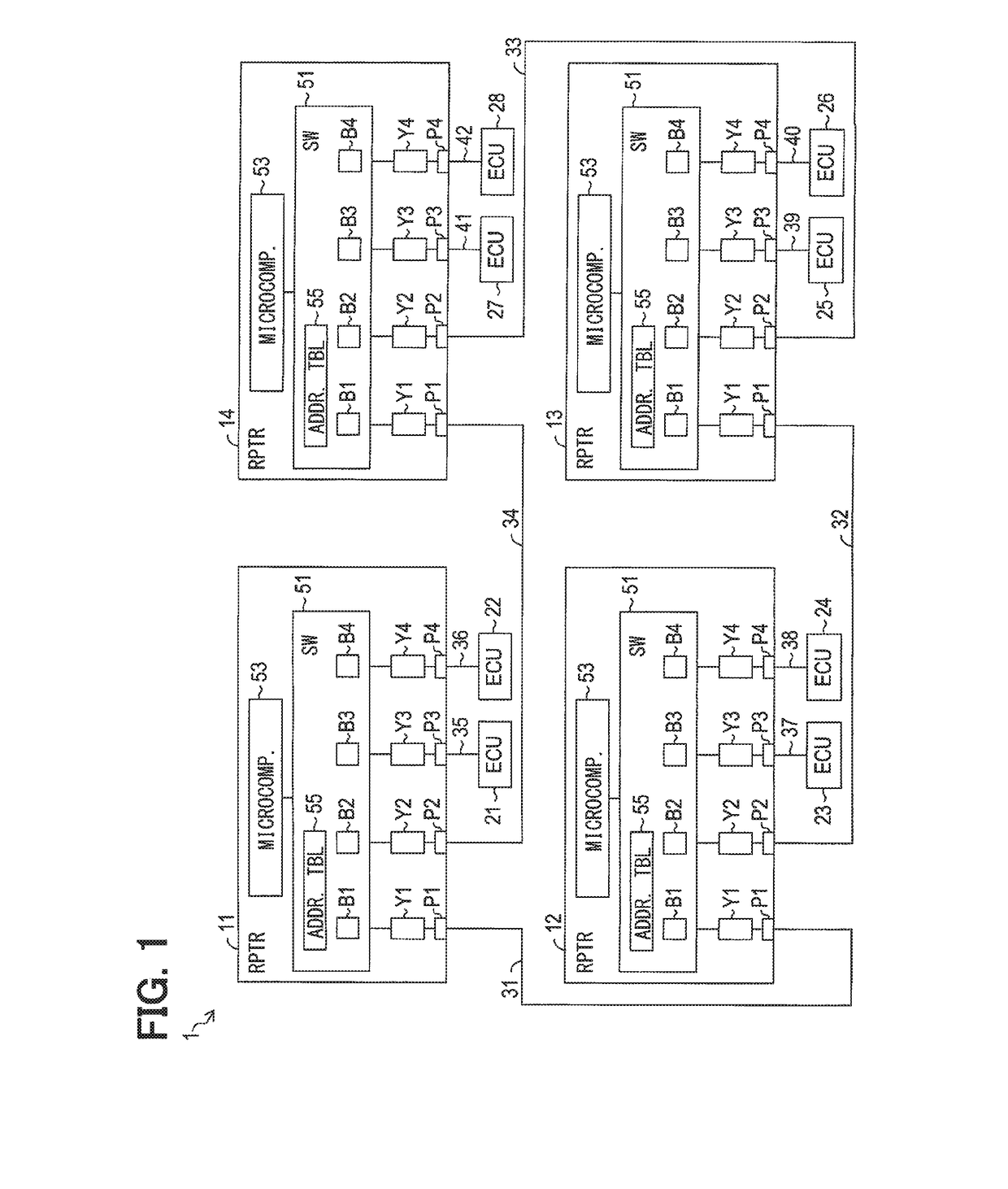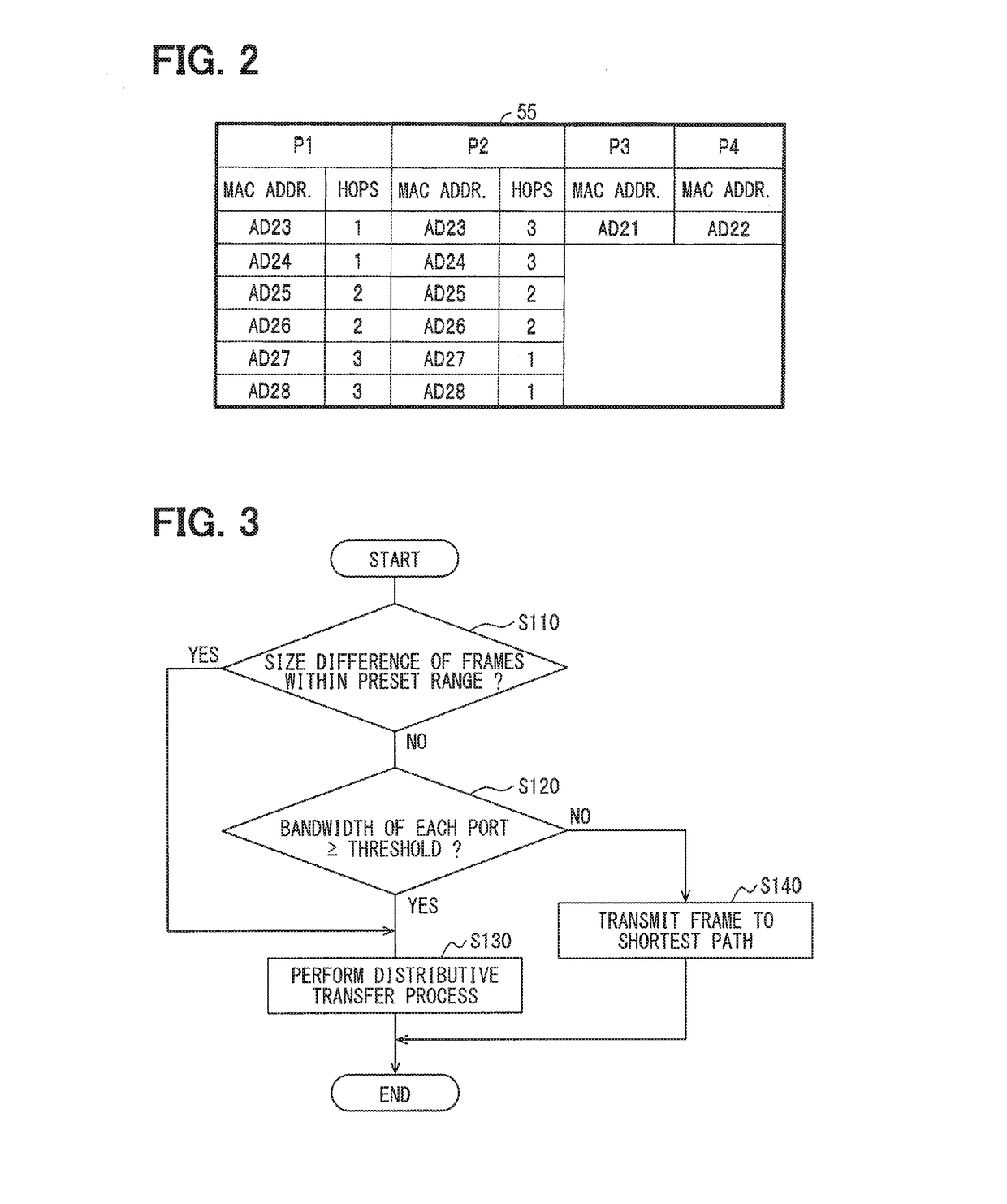Repeater
- Summary
- Abstract
- Description
- Claims
- Application Information
AI Technical Summary
Benefits of technology
Problems solved by technology
Method used
Image
Examples
first embodiment
1. First Embodiment
[0019][1-1. Configuration]
[0020]A communication network 1 of the first embodiment shown in FIG. 1 is the Ethernet network disposed in, for example, a vehicle, e.g., a passenger vehicle, and serves as a communications system in the vehicle.
[0021]As shown in FIG. 1, the communication network 1 is provided with repeaters 11-14, Electronic Control Units (ECUs) 21-28 respectively serving as a communication node, and communication lines 31-42.
[0022]The repeaters 11-14 are provided with a function to serve as an Ethernet switch to relay communications between the ECUs 21-28.
[0023]Further, the repeaters 11-14 are provided with a plurality of ports for transmitting and receiving frames. The repeaters 11-14 are provided with four ports P1-P4 in the example of the present embodiment. The repeaters 11-14 are provided with a switch part 51, respectively. The switch part 51 performs a relay process for relaying the communications according to the Ethernet standard.
[0024]The rep...
second embodiment
2. Second Embodiment
[0113][2-1. Difference of the Second Embodiment from the First Embodiment]
[0114]The configuration of the second embodiment is basically the same as that of the first embodiment, with a difference discussed below.
[0115]The same numerals are used for the same components / configurations as the first embodiment, thereby not repeating the same descriptions.
[0116][2-1-1. Configuration]
[0117]A communication network 60 of the second embodiment shown in FIG. 4 is provided with repeaters 61-68 and ECUs 71-76. The ECUs 71-75 are connected to the repeater 61. The ECU 76, which may be a destination address of the frame from the ECUs 71-75, is connected to the repeater 63. Further, at a position between the repeater 61 and the ECU 76, there are three communication paths, i.e., the first to third communication paths R1-R3.
[0118]The number of the repeaters, the ECUs, and the communication paths described above is an example.
[0119]The first communication path R1 is a path of “repe...
PUM
 Login to View More
Login to View More Abstract
Description
Claims
Application Information
 Login to View More
Login to View More - R&D
- Intellectual Property
- Life Sciences
- Materials
- Tech Scout
- Unparalleled Data Quality
- Higher Quality Content
- 60% Fewer Hallucinations
Browse by: Latest US Patents, China's latest patents, Technical Efficacy Thesaurus, Application Domain, Technology Topic, Popular Technical Reports.
© 2025 PatSnap. All rights reserved.Legal|Privacy policy|Modern Slavery Act Transparency Statement|Sitemap|About US| Contact US: help@patsnap.com



